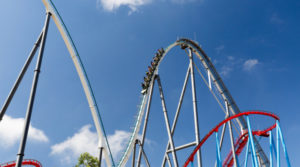
Last weekend, I was riding my bicycle up a 16 mile grade near Morgantown, West Virginia. It was a long but relatively easy ride. During my trek, I began to think about organizational trust. At times, the level of trust that organizational leaders possess, relative to safety, is only as good as their last day, or even their last job. You see, trust is very fluid—it changes. Levels of trust can move up or down—but more often than not, great leaders help to ensure that trust-based undulations are minimized and respectfully safeguarded.
Trust is often a two-way exchange, for both leaders and followers—each having to monitor and ensure that it is protected and kept intact. However, from a leadership perspective, trust is largely about believing that someone will do what is best for his or her followers or group. And in our context, trust is mainly about doing what’s right to protect our assets and keep others safe, especially when workers are vulnerable to a given risk or injuries.
Leaders have to understand that trust is a multi-dimensional component of leadership which can be built, eroded, or even lost along an assortment of dimensions like those cited below.
- Competence pertains to one’s knowledge of a specific job and the overall knowledge, skills, and abilities of a leader. That’s why individuals have to continually grow and build trust through their work-related competencies.
- Cultural Integrity is about doing what is right—even when nobody’s around. One’s integrity as a leader requires that you do what’s right for your organization to uphold the highest levels of organizational and cultural expectations that will keep your employees safe. Pushing back on the various organizational pressures that may pose unacceptable risk for harm or injury also builds and maintains cultural integrity.
- Coaching, for me, is about modeling the way, setting a great example—day in and day out—task by task, in small and large ways that show the absolute value of safety for every individual.
- Collaboration requires that leaders remain approachable and open to the thoughts, ideas, and recommendations of others, in order to lower risk and improve safety performance, continually.
- Care being shown for others begins by connecting with people on a personal and emotional level. Showing care, concern, and respect is the very foundation of great safety leadership and influence.
It’s important to realize, there’s a natural bias for workers to remember “trust-eroding experiences” to a larger extent than “trust-building experiences”. As the old adage goes, “it’s easy to lose trust and very difficult to gain it back.” Bad experiences that relate to trust-eroding are remembered for longer periods of time and overshadow the brighter side of trust-building experiences. Ask any leader who has had to regain a higher level of trust that’s been damaged or lost.
Leaders have to work hard to build and maintain trust, especially when it comes to something as personal and individual as safety. And we need to be ever mindful that trust is delicate—it’s fluid and fragile. Leaders have to be diligent to maintain it, rather than allow it to erode or fully corrode. When trust erodes it’s much harder to engage and lead people toward and through your safety-related challenges, goals, and objectives.
Leaders must fully realize that trust is built or damaged in a number of ways and through a number of dimensions that may often occur simultaneously through: our competence and knowledge; our cultural integrity in doing what is right to keep people safe, even in the midst of productivity challenges; our everyday coaching or actions and example; the degree collaboration and openness in working with others, obtaining their input and acting accordingly; the care and concern we express toward each other in our actions, communications, and overall respectfulness.
Trust is fragile and challenging to maintain. Work hard to build and maintain it, because once the erosion begins, it may be extremely difficult regain.
Oh, and my bike ride back? It was great—a quick descent, but not the kind of drop you want to experience when it comes to safety-related trust within your organization.
